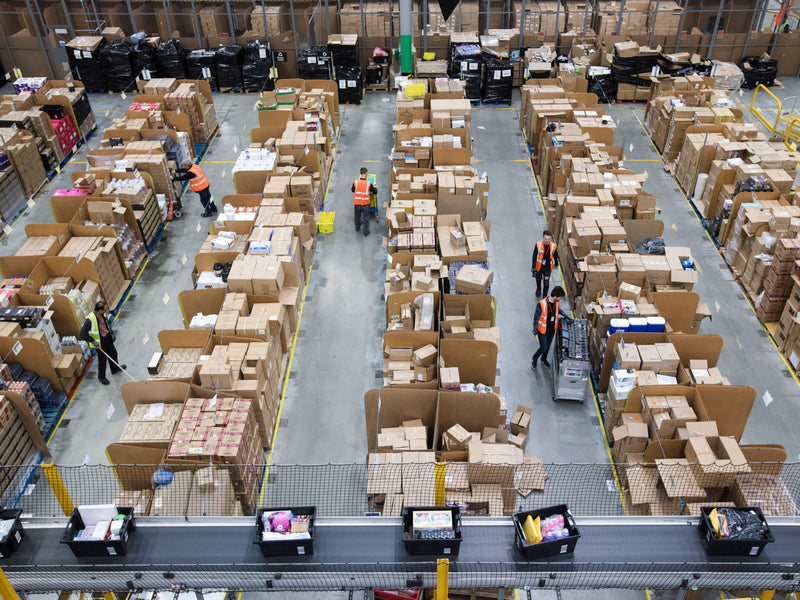Red Sea drone strikes, Panama Canal drought restrictions, and tit-for-tat tariff threats have made 2024-25 the most volatile period for ocean shipping in a decade. Detours around the Cape of Good Hope now add 3 000-plus nautical miles to Asia-Europe sailings, pushing fuel bills and transit times higher. At the same time, low water levels in the Panama Canal have forced daily vessel caps, squeezing capacity on US-bound lanes. Layer on renewed tariff brinkmanship between the world’s largest economies and you get a freight market where spot rates can swing 40 percent in a single quarter.
For eCommerce operators the impact is immediate. Higher container rates inflate landed cost, longer lead times tie up cash in transit, and insurance premiums rise on routes deemed high risk. Brands that rely on predictable door-to-door transit now face a planning fog: will the next quarter bring a lull in rates or another surge triggered by events outside the supply-chain playbook? In this piece we break down the three pressure points that matter most, then outline the practical steps we are taking with partner brands to keep margins intact.
Security Flashpoints: The Red Sea and Suez Corridor
Houthi attacks on merchant vessels have pushed major carriers to reroute away from the Red Sea and Suez Canal, adding up to two weeks to Europe-Asia transits. The UN Security Council voted in July 2025 to keep monthly briefings on the attacks, underscoring the ongoing risk to one of the world’s busiest trade lanes AP News. UNCTAD warns that detours have already lifted container spot rates on the Far East-North Europe route by more than 15 percent compared with the 2023 average UN Trade and Development (UNCTAD).
Longer voyages mean higher bunker fuel spend, tighter container availability, and knock-on congestion at destination ports. For brands, this translates into freight surcharges, slower inventory turns, and wider demand-planning error bars. eComplete is mitigating the risk by shifting time-sensitive SKUs to air-sea hybrid services and by booking space earlier on carriers that still transit Suez under naval escort.
Canal Bottlenecks and Climate Pressure
Severe drought cut Panama Canal transits by one-third in late 2024, a restriction that continues to ripple through 2025 schedules Default. Each daily slot removed pushes more Asia-US East Coast cargo onto either the West Coast rail land-bridge or the Suez route, tightening capacity everywhere.
Climate-linked disruptions are unlikely to be one-off events. The latest UNCTAD Global Trade Update calls out “increasing climatic constraints on traditional maritime chokepoints” as a structural risk to supply-chain resilience UN Trade and Development (UNCTAD). Our response has been to diversify routings, using Mexican or Canadian gateways where inland links can bridge final-mile gaps, and to build water-level clauses into carrier contracts that allow mid-season service shifts without penalty.
Policy Uncertainty and Rate Volatility
Even when vessels sail freely, tariff headlines can jolt freight markets. Baltic Exchange analysis from July 2025 links rate spikes on the Asia-Mediterranean lane to renewed talk of EU carbon border levies and US-China tariff snapbacks Baltic Exchange Consumer. Freightos data show Asia-Northern Europe prices rising 14 percent month-on-month in June, while Transpacific rates fell, illustrating how policy chatter quickly diverts capacity and pricing power Freightos.
Brands that fix annual contracts without flexibility risk locking into above-market rates when supply loosens, or scrambling for spot capacity when lanes tighten overnight. We are negotiating blended models that combine rolling quarterly index-linked rates for baseline volume with guaranteed space agreements for peak weeks. This keeps cost structures responsive without sacrificing reliability.
Conclusion: Building a Playbook for Persistent Volatility
The era of cheap, predictable ocean freight is over. Security incidents, climate shocks, and policy swings can all trigger double-digit rate moves in weeks, not years. Brands that treat freight purely as a procurement line item will struggle to protect margin and service levels. The alternative is an orchestrated strategy: diversified routings, index-linked contracts, and proactive capacity planning baked into merchandising calendars.
At eComplete we integrate live rate feeds, risk alerts, and inventory data into a single control-tower view, so operators know when to pull levers like modal shift, load-in earlier, or hedge with multi-port routing. If your landed costs keep surprising finance or if lead-time variance is starting to hurt conversion, it may be time for a sea-freight audit.



